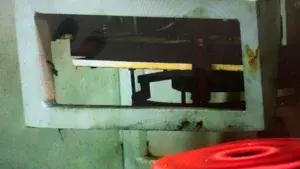3 min read
Benefits and Applications of Induction Hardening Technology
 Southwest Steel Processing
:
May 26, 2023
Southwest Steel Processing
:
May 26, 2023

The concept of induction heating has been utilized in manufacturing since the 1920s. Nowadays, precisely controlled induction heating systems play a crucial role in the manufacturing industry. Induction heating helps expedite part production, ensures consistent high-quality results, and reduces overall costs.
Induction hardening is a type of surface hardening process that is commonly used to increase the hardness and durability of various types of metal components. The process involves heating the surface of the metal using an induction coil, which generates a high-frequency electromagnetic field. This causes the surface of the metal to heat up rapidly, while the core remains relatively cool resulting in a martensitic transformation.
The benefits of induction hardening include:
- Induction hardening is a rapid heating process that uses high-frequency electricity to heat the surface of a metal part to a temperature above its transformation point. This results in the formation of a thin, case hardening with a tough and ductile core.
- The process can be used on a wide range of ferrous and non-ferrous materials, including steel, cast iron, brass, and aluminum.
- The increased hardness and wear resistance of the hardened surface can help prolong the service life of the part and reduce maintenance costs.
- Improved fatigue strength means that the part can withstand cyclic loading without cracking or breaking, making it ideal for high-stress applications.
- Reduced friction and improved corrosion resistance can help improve the performance and efficiency of mechanical components in harsh environments.
- Greater dimensional stability means that the part will maintain its shape and size even under extreme conditions, ensuring a precise fit and function.
Overall, induction hardening is a versatile and effective technique that can yield numerous benefits for manufacturers across many industries.
The Many Industries
Induction hardening is commonly used in the manufacturing of gears, shafts, and other components that are subject to high levels of stress and wear. It is also used to harden the surfaces of cutting tools, such as drill bits and saw blades.
In addition to the industries mentioned above, induction hardening is also widely used in the aerospace and automotive industries. It is used to harden the surfaces of engine components such as camshafts, crankshafts, and connecting rods. This process helps to increase the fatigue life of these critical components and ensures that they can withstand the extreme conditions that they are subjected to.
Induction hardening is also a popular choice for manufacturers who want to improve the wear resistance and high strength of their products. By selectively hardening only the areas of the component that are subject to stress and wear, manufacturers can reduce the overall weight of the component while still maintaining its strength and durability.
Overall, induction hardening is a versatile and effective method for improving the performance and lifespan of metal components in a wide range of industries.
A Brief Overview: Induction Heating's History
The origin of induction heating dates back to the early 1800s when Michael Faraday discovered electromagnetic induction. However, it wasn't until the late 1800s that the first induction heating patent was filed by Nikola Tesla. From there, induction heating technology continued to evolve with the development of new materials and the advancement of electronics.
Today, induction heating processes are used in a variety of industries including metallurgy, automotive, and food processing. Some of the benefits of induction heating include faster heating times, precise temperature control, and energy efficiency.
As technology continues to advance, it's likely that induction heating will become even more prevalent in modern manufacturing processes.
Our In-House Heat Treating Capabilities
We have the capability to heat treat your forged components internally, so you can acquire the mechanical and physical qualities necessary for your specific application or industry. Without finding another supplier to complete your heat treating – saving you time and money.
These capabilities include processes such as normalization, quenching and tempering, annealing, as well as induction hardening.
Here are some additional points to consider:
- - Normalizing is a process where we heat the component to a specific temperature and then cool it in still air. This helps to refine the grain structure of the metal and improve its overall strength and toughness.
- - Quench and temper involves heating the component to a high temperature, then rapidly cooling it in a quenching medium such as oil or water cooled. This creates a hard, brittle surface layer which is then tempered by reheating to a lower temperature. This process improves the component's wear resistance and toughness.
- - Annealing is a process where we heat the component to a specific temperature and then cool it slowly in a furnace. This process helps to relieve stress in the metal and improve its ductility and toughness.
- - Induction hardening is a specialized process where we use an induction copper coil to heat only the surface layer of the component. This creates a hard, wear-resistant surface layer while leaving the core of the component relatively soft and ductile.
Our team possesses both the necessary skills and state-of-the-art equipment to handle your heat-treating requirements with precision and proficiency.
.webp?width=460&height=66&name=logo%20(1).webp)



.jpg)